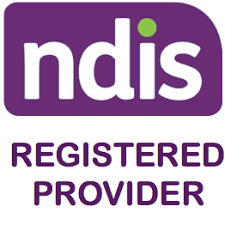Apps
Definition of Acquired Brain Injury
An acquired brain injury (ABI) is damage to the brain that occurs after birth and is not related to birth trauma, congenital disorder, a developmental disability or degenerative disease.
Causes of Acquired Brain Injury
Acquired brain damage can include damage sustained by infection, disease, lack of oxygen or a blow to the head. Two thirds of all people with an ABI who have their activity limited or restricted are over the age of 45.
Types of Acquired Brain Injury
There are two main types of acquired brain injury
- Traumatic brain injury: a traumatic brain injury (TBI) occurs when the brain is damaged by an external event or force.
- Non-traumatic brain injury: a non-traumatic brain injury (nTBI) occurs when the brain is damaged by an internal event or force.
Causes of Traumatic Brain Injury
- Motor Vehicle accidents.
- Falls.
- Violence (e.g. direct blows to the head, gunshot wounds, violent shaking of the head).
- Sports/recreational injuries (e.g. bike riding, skating, horseback riding).
- Electrical shock or lightning.
- Anoxia (loss of oxygen) (e.g. near-drowning, throat swelling, during surgery, choking, strangulation, crush injuries to the chest).
Causes of Non-Traumatic Brain Injury
- Stroke.
- Brain tumors.
- Drug overdose.
- Infectious disease; intracranial tumors; metabolic disorders such as Meningitis; brain tumors; hypo/hyperglycemia, hepatic encephalopathy, encephalopathy.
- Seizure disorders.
- Cardiac arrest
- Toxic exposure to industrial chemicals, poisonous substances and gases, such as lead, gasoline and carbon monoxide.
Symptoms of Acquired Brain Injury
Every brain injury is unique and the type of injury the brain receives may affect just one functional area of the brain, various areas, or all areas of the brain. The symptoms will also vary in severity. Therefore each individual with an ABI may or may not face or exhibit some or all of the symptoms described below:
Physical difficulties
- Extreme mental and/or physical fatigue.
- Disorders of movement - gaiting, ataxia, spasticity and tremors.
- Seizure activity (traumatic epilepsy).
- Impaired fine motor control, balance and coordination.
- Constant or intermittent pain, headaches or dizziness.
- Sleep disorders.
- Paralysis and/or spasticity.
- Reduced strength and coordination in the body, arms, and legs.
- Nausea.
- Lethargy (sluggish, sleepy, gets tired easily).
- Body numbness or tingling.
- Loss of bowel control or bladder control.
Communication difficulties
- Difficulties with attending to and understanding complex instructions.
- Difficulty with following conversations.
- Word finding problems.
- Speech that is not clear due to poor control of the muscles in the lips, tongue and jaw.
- Breathing muscles may be weaker, affecting the ability to speak loud enough to be heard in conversation.
- Difficulties with spelling, writing, and reading.
- Difficulty with chewing and swallowing effectively.
- Word retrieval problems.
- Difficulty with abstract language.
- Need for a longer response time, and the tendency to make things up inappropriately.
Cognitive difficulties
- Difficulties with memory.
- Short term memory is affected more often than long-term memory (forgetfulness; difficulty learning new material).
- Difficulties with concentrating in a distracting environment.
- Difficulty with dividing attention among multiple tasks/demands.
- Impairments in executive functioning.
- Difficulty solving problems.
- Difficulty in processing information (decreased speed, accuracy and consistency).
- Problems seeing the ‘whole picture’ or getting a concept.
- Shortened attention span/ concentration.
- Inability to understand abstract concepts.
- Impaired decision-making ability.
- Inability to shift mental tasks (repetitions of thoughts or behaviours).
- Difficulty with abstract thinking.
- Impulsiveness.
- Inflexibility and difficulty with adjusting to change.
For support with Cognitive Difficulties, see these resources:
Psycho-social difficulties
- Difficulty with initiating, taking turns, maintaning and terminating conversations appropriately.
- Difficulty using an appropriate tone of voice.
- Difficulty interpreting the subtleties of conversation (e.g., the difference between sarcasm and a serious statement).
- Difficulty recognising, interpreting and responding to facial expressions and body language.
- Difficulty keeping up with others in a fast-paced conversation.
- May be overemotional (overreacting) or "flat" (without emotional affect).
- Different degrees of awareness of self and changes.
- Little or no awareness of impact of their communication style on others.
- Difficulties with understanding cause-effect.
- Rapid fluctuations in emotion (i.e. frequent mood swings, overreactions, impulsive crying, inappropriate reactions, aggressiveness, apathy, and/or errors in judgment).
For for support with Physco-social difficulties see:
Perceptual Symptoms
- Sensory overload (e.g. noisy hallways, crowded areas, too much information presented too quickly).
- Loss of sense of time and spatial disorientation.
- Changes in sight, hearing, touch, smell and taste.
Behaviour Help
If you are supporting an individual with this diagnosis, please refer to our services and resources. They aim to help children, adolescents and adults achieve better communication, social, emotional, behavioural and learning outcomes. So whether you are wanting guidance on parenting, teaching, supporting or providing therapy, Behaviour Help is at hand.
Note: This is not an exhaustive list of all the possible causes, symptoms and types but some general information that can be further explored. Based on what you have read if you have any concerns about an individual, please raise them with the individual/s. The caregiver can then raise these concerns with their local doctor who can provide a referral to the relevant professional (e.g. paediatrician, psychologist, psychiatrist, allied health professional and learning specialists) for diagnosis and treatment if appropriate.
Get Started with Behaviour Help App
Assess-manage-prevent behaviours of concern efficiently and effectively with the Behaviour Help App.

